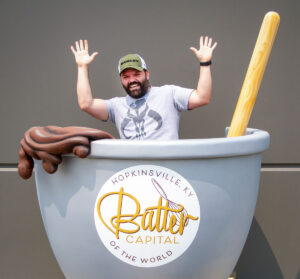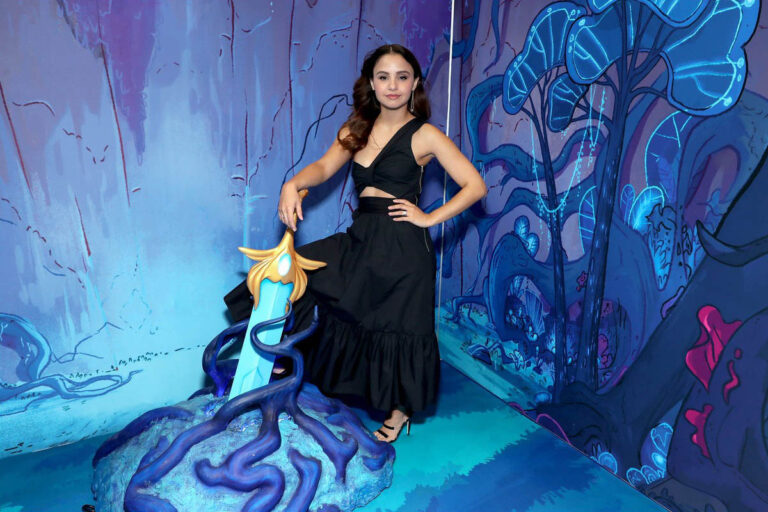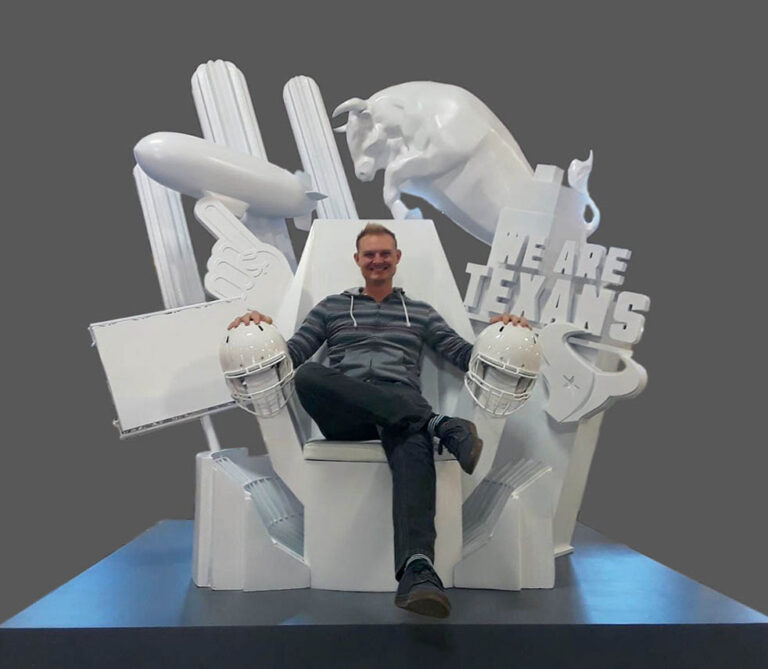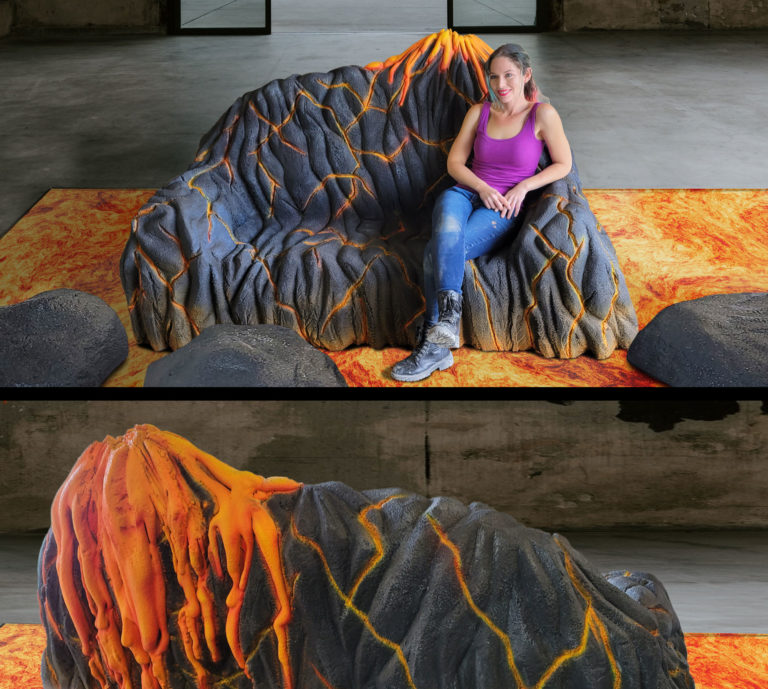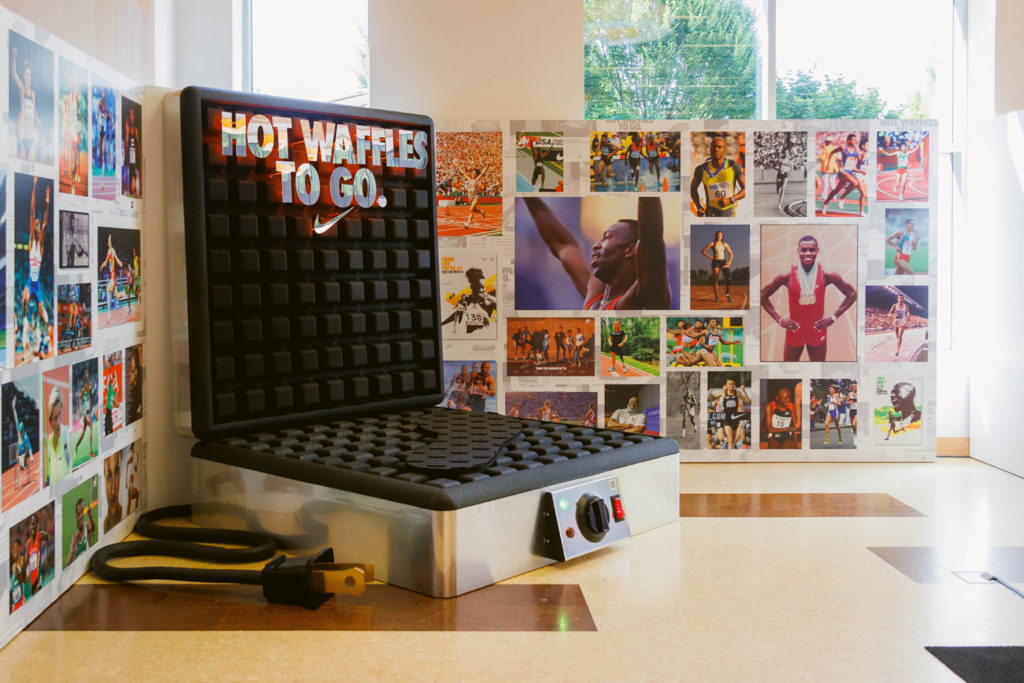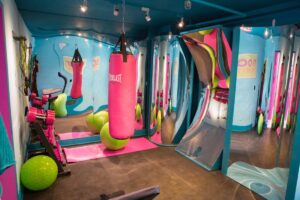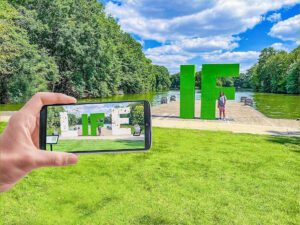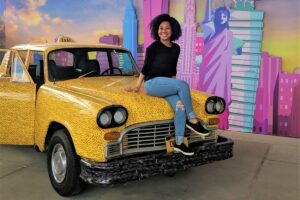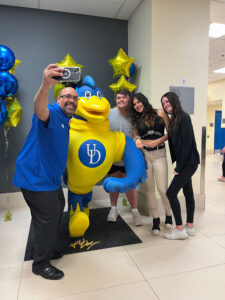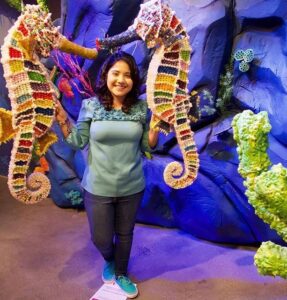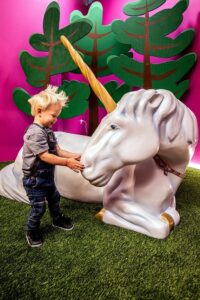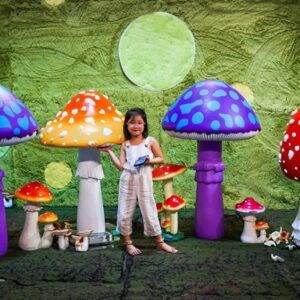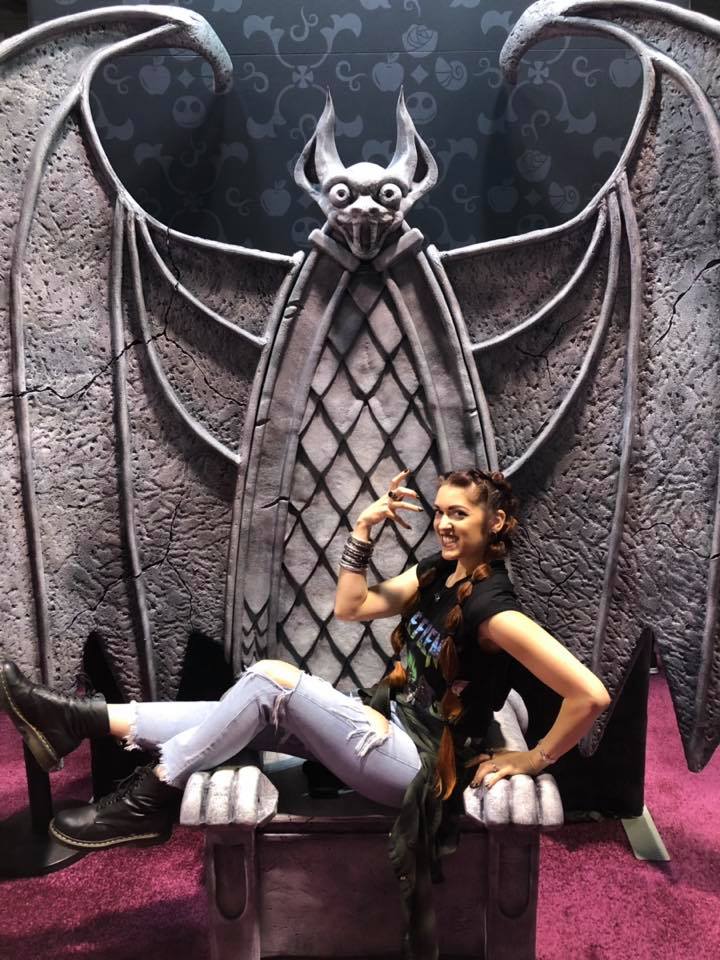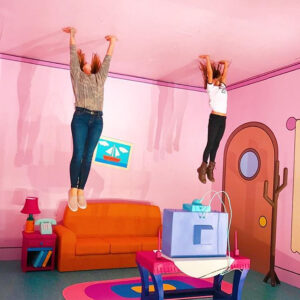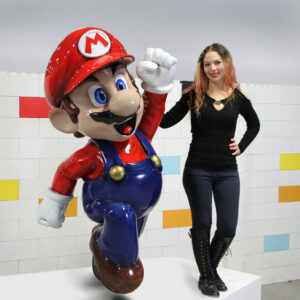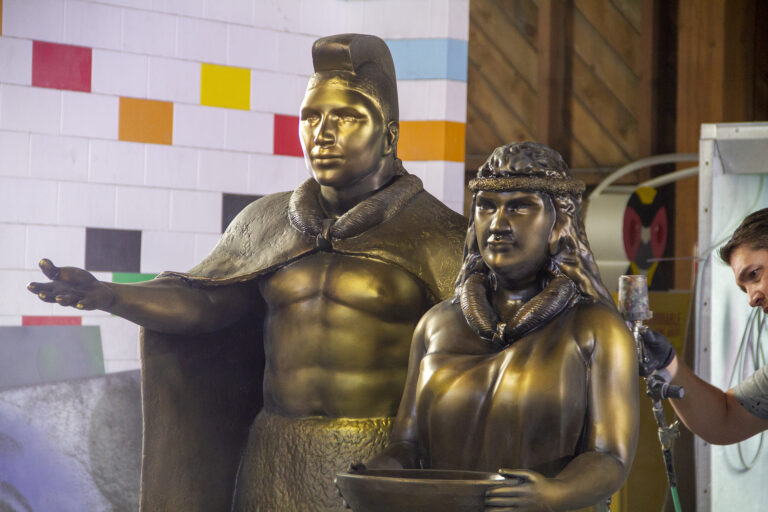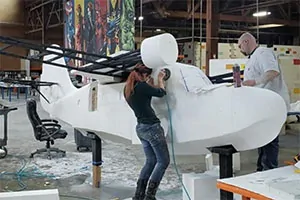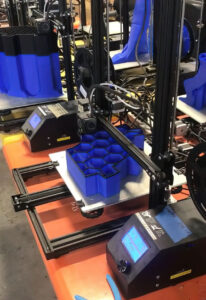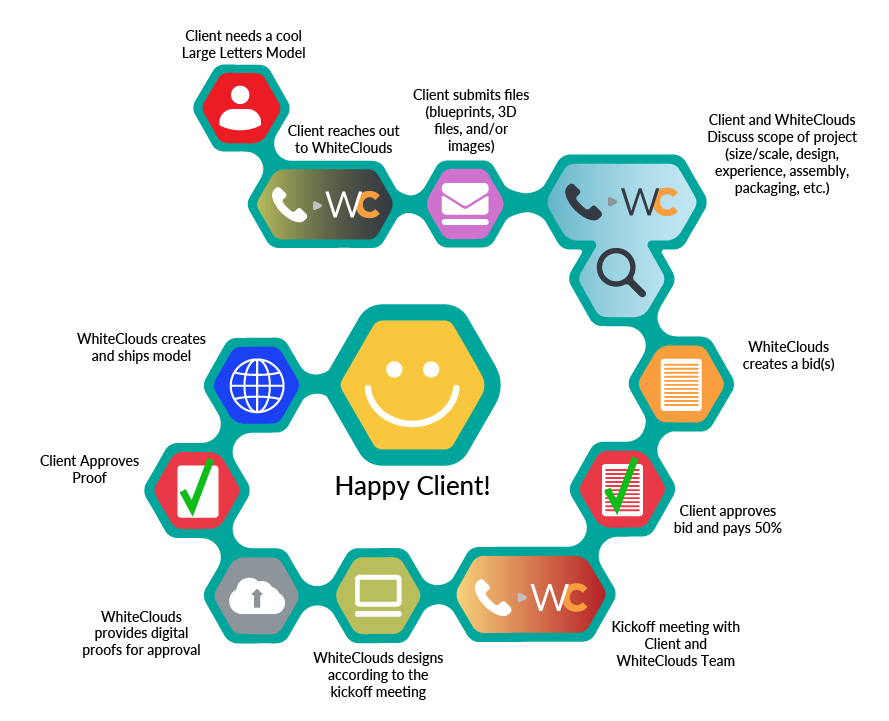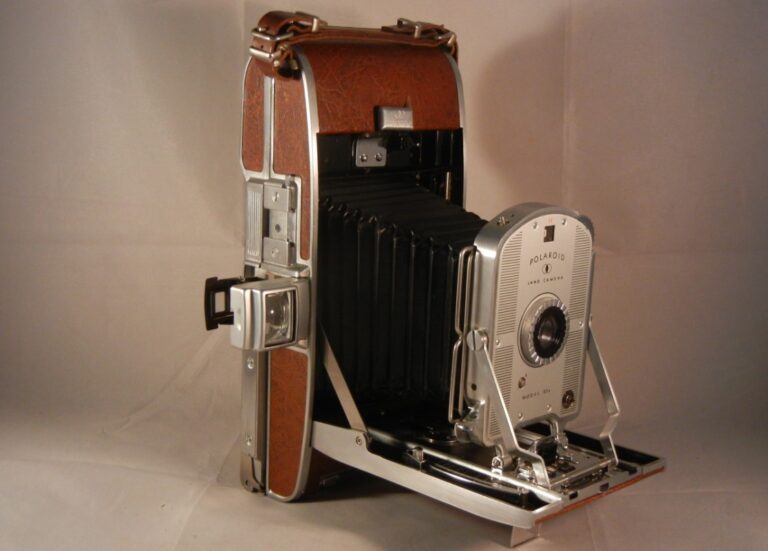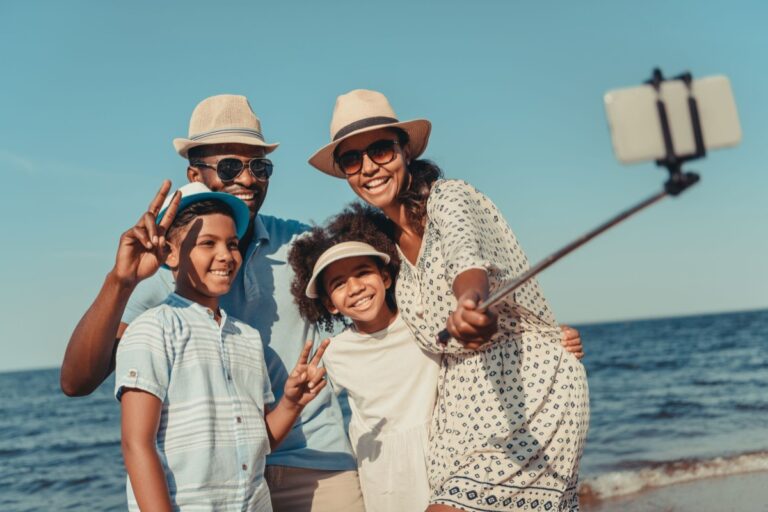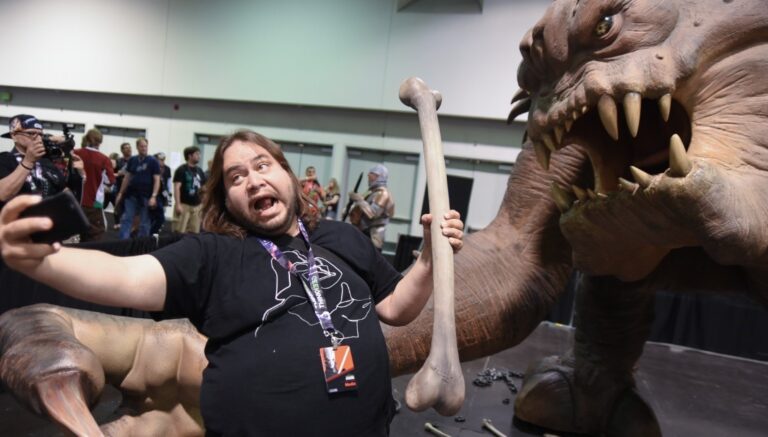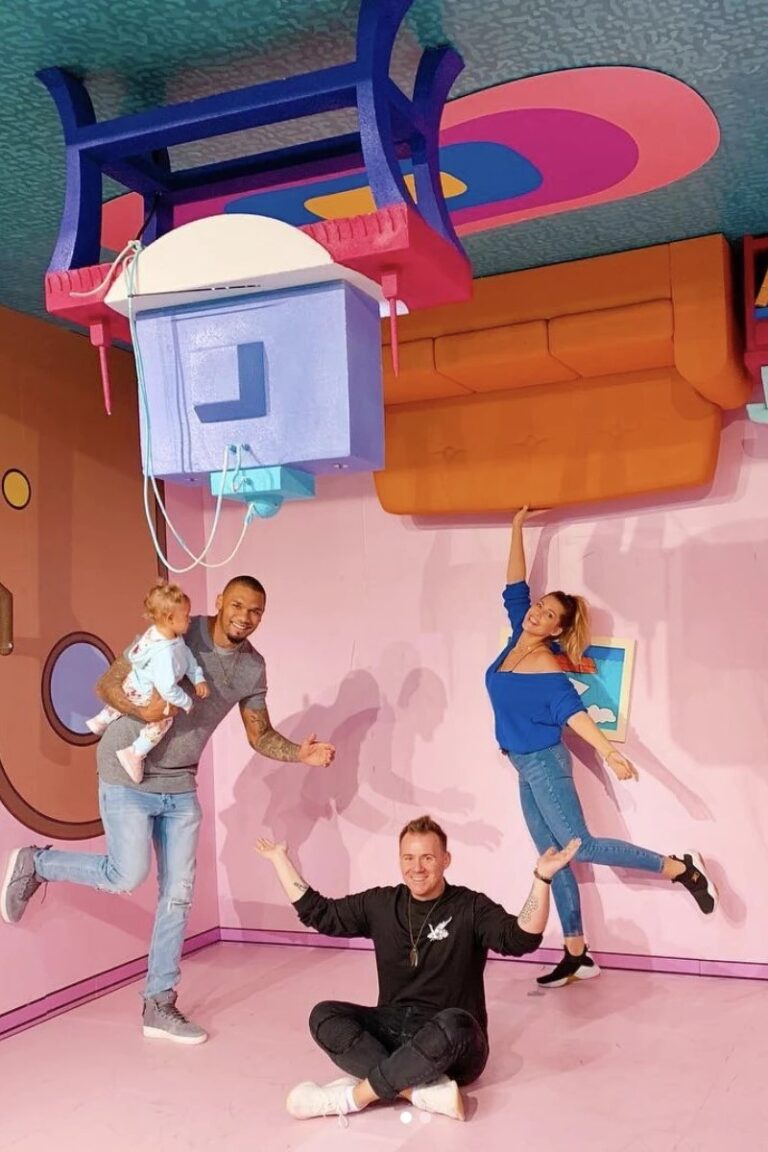The selfie, as we know it today, had its origins in Japanese kawaii (cute) culture in the 1990s. Young girls would take photos with friends, exchange them and post in their kawaii albums. And in 1983, Minolta’s Disc-7 camera had a convex mirror on the front to enable people to take self-portraits.
The telescopic extender was patented in 1983 and came to be known as the selfie stick. It achieved worldwide popularity in the early 21st century.
As cell phones came along in the late 1990s, Japanese models included front facing cameras that enabled the creation of selfies. These were also used for video calls and as more mobile phones came on the market like the iPhone 4 the digital cameras were available globally.
In 2000 social media sites were introduced and people began posting their selfies on places like MySpace, Facebook, Flickr and Snapchat. The selfie – as coined by Australian Nathan Hope (2002), became popular all over the world and a new genre of photography was born. Selfies these days aren’t just for one person, groups of people have joined in the fun.
By 2013 the word “selfie” was included in the online version of the Oxford Dictionary and was announced as the word of the year. Instagram has over 53 million photos tagged with the hashtag #selfie to date and within one week’s time (October 2013), the hashtag was used in more than 150,000 tweets on Twitter.
24 billion selfies were uploaded to Google in 2018. Some of these have been taken at interactive pop-up museums like the Museum of Ice Cream, Color Factory, Candytopia and the Museum of Selfies. Some experiential museums have themes like the Egg House, the Halloween Scream Museum and the Museum of Pizza while others focus on culture and art like the Museum of Pop culture, the Parody of Art Museum and PopUp Disney. These trendy museums exist all over the world.
